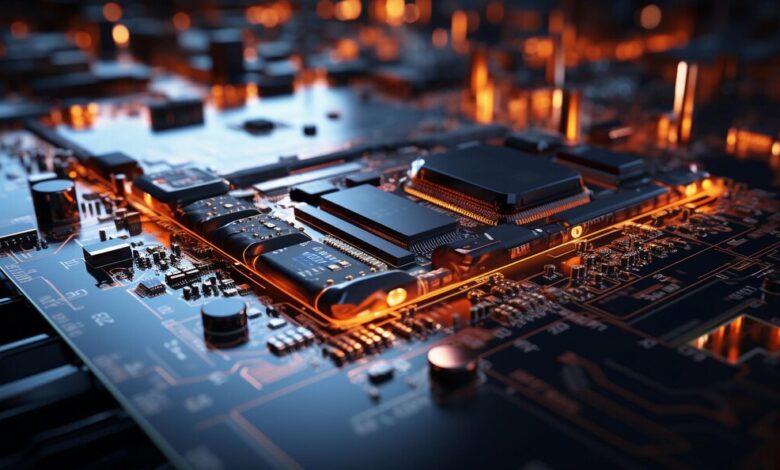Understanding Microcontrollers: The Heart of Modern Electronics

Microcontrollers have become an integral part of modern electronics, driving innovation across various industries. These small, powerful devices are the brains behind countless applications, from household gadgets to complex industrial systems. In this article, we’ll delve into what microcontrollers are, their types, how they work, and their applications. We’ll also explore the impact of microcontrollers on technology and why they are essential in today’s digital age.
What is a Microcontroller?
A microcontroller is a compact integrated circuit designed to govern a specific operation in an embedded system. Unlike microprocessors, which serve as the central processing unit (CPU) in computers, microcontrollers include multiple components such as memory, input/output ports, and timers on a single chip. This integration makes them ideal for dedicated tasks where space, cost, and power efficiency are crucial.
Components of a Microcontroller
Central Processing Unit (CPU)
The CPU is the core of the microcontroller, responsible for executing instructions and processing data.
Memory
Microcontrollers typically include both RAM (for temporary data storage) and ROM/Flash memory (for storing the program code).
Input/Output Ports (I/O Ports)
These ports allow the microcontroller to interact with external devices, such as sensors, displays, and other peripherals.
Timers and Counters
Timers are used for measuring time intervals, generating delays, and triggering events at precise times.
Analog-to-Digital Converters (ADC)
ADCs convert analog signals from sensors into digital data that the microcontroller can process.
How Do Microcontrollers Work?
Microcontrollers operate by executing a program stored in their memory. This program consists of a series of instructions written in a programming language such as C or assembly. The process begins with the microcontroller receiving input signals from sensors or other devices. It then processes these signals according to the program’s instructions and generates the appropriate output, such as turning on an LED, displaying information on a screen, or sending data to another device.
Types of Microcontrollers
8-bit Microcontrollers
These are suitable for simple applications where processing power and memory requirements are minimal. Examples include the popular 8051 and AVR series.
16-bit Microcontrollers
These offer better performance and are used in applications requiring more processing power and memory, such as automotive systems and industrial automation.
32-bit Microcontrollers
These are the most powerful and are used in complex applications like advanced robotics, medical devices, and high-end consumer electronics. Examples include ARM Cortex-M series.
Applications of Microcontrollers
Consumer Electronics
Microcontrollers are found in everyday devices like microwaves, washing machines, remote controls, and gaming consoles, enabling them to perform specific tasks efficiently.
Automotive Industry
Modern vehicles rely on microcontrollers for engine control, braking systems, airbag deployment, and infotainment systems.
Industrial Automation
Microcontrollers are used in programmable logic controllers (PLCs), motor control systems, and factory automation to enhance productivity and precision.
Medical Devices
From heart rate monitors to insulin pumps, microcontrollers play a critical role in medical diagnostics and treatment devices.
IoT Devices
The Internet of Things (IoT) revolution relies heavily on microcontrollers to connect and control smart devices, ranging from home automation systems to wearable technology.
Advantages of Microcontrollers
Cost-Effective
Microcontrollers are relatively inexpensive, making them ideal for cost-sensitive applications.
Low Power Consumption
Designed for energy efficiency, microcontrollers can operate on minimal power, which is essential for battery-powered devices.
Compact Size
Their small size allows them to be embedded in a wide range of products, from tiny sensors to large industrial machines.
Versatility
Microcontrollers can be programmed to perform a variety of tasks, making them highly versatile and adaptable.
Challenges and Considerations
Limited Processing Power
While adequate for many applications, microcontrollers may struggle with tasks requiring significant computational power or complex algorithms.
Memory Constraints
The limited memory available on microcontrollers can be a challenge for applications requiring extensive data storage or complex program code.
Programming Complexity
Developing efficient code for microcontrollers requires specialized knowledge and skills, particularly for optimizing performance and managing resources.
Future Trends in Microcontrollers
Increased Integration
Future microcontrollers are expected to integrate more functions on a single chip, further reducing size and cost while enhancing capabilities.
Enhanced Connectivity
With the growth of IoT, microcontrollers will increasingly support advanced communication protocols like Wi-Fi, Bluetooth, and Zigbee.
AI and Machine Learning
Microcontrollers with built-in support for AI and machine learning algorithms will enable smarter and more autonomous systems.
Energy Efficiency
Continued improvements in power management will make microcontrollers even more suitable for ultra-low-power applications.
Conclusion
Microcontrollers are the unsung heroes of modern electronics, powering a vast array of devices and systems that we rely on every day. Their versatility, cost-effectiveness, and efficiency make them indispensable in numerous applications, from consumer electronics to industrial automation. As technology continues to advance, microcontrollers will play an increasingly vital role in driving innovation and shaping the future of various industries. Understanding their functions, capabilities, and potential can help us appreciate the profound impact these tiny devices have on our world.




